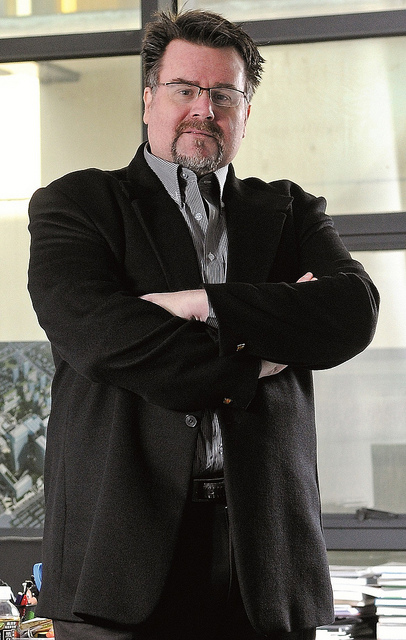One architectural factoid we commonly use: is that “buildings consume 50% of the worlds produced energy,” yet we keep building more structures that require more and more energy. The architectural “style” of a building has been replaced by a list of it’s sustainable concepts, but are these buildings really green asks Marshall Strabala.
 Remember every architectural project is a prototype, not a manufactured commodity. A building is a one off system, in a unique location, with a unique program. The sheer number of design variables are staggering. There can not be “One size fits all sustainability method.”
Remember every architectural project is a prototype, not a manufactured commodity. A building is a one off system, in a unique location, with a unique program. The sheer number of design variables are staggering. There can not be “One size fits all sustainability method.”
In the last five years, every presentation on architecture this author has witnessed, incorporates some form of significant sustainable achievement. So much so that we should be seeing a huge reduction in total energy used ? We have seen projects that incorporate plants all over the façade, and claim sustainability.
This same projects makes no reference to energy conservation because the plants are there. We have seen complex movable louvers systems that can completely close off a building to solar gain, but there is no mention of a cost benefit analysis that proves the extra money of this hi tech element is justified. We have seen designs for mega cities that claim: 50% preservation of farmland, and a reduction of consumed energy to a mere fraction of our past projects. Yet somehow these projects are still not realized.
The inverse claim is just as valid, and is probably more telling: “this project was 100% farm land and we are now building on 50% of it, the flat part (in order to reduce construction cost) We are reducing the production of food and, increasing the heat island effect. We are only quintupling the energy consumed per square meter is we average in the farmland !”
There is a project in the middle east that uses a massive solar roof of Building Integrated Photo Voltaic (BIPV), to both shade the inhabitants in the structure below, and create on site renewable energy. This projects seems to be on hold. While at SOM in Chicago, we did a master plan for the Phoenix Exhibition Center Expansion, in a city where there are over 300 days of clear sunshine. However a BIPV system could be economically justified without reducing the total size of the project. The economics of sustainability are changing we can no longer afford to green wash the built environment, we as architects need to step up and prove our results. Sadly this part of the equation is conspicuously missing from every presentation. BIPV is a great concept, one which I have tried countless times in the past twenty five years, but the 20 year product life is dwarfed by the 40+ year payback time.
It seems we spending more and more energy with the left hand in order to show how little energy we use on the right hand? Except for free products, government subsisted, tax rebates, the BIPV industry would fall apart.
The true efficiency in the future will be a total integration and refinement of the MEP systems with the architecture. These are rarely discussed in architectural lectures, and therefore we still play the “Green Style Game,” and talk about our projects as sustainable without substance.
I feel the “Green Band Wagon” has left the building with everyone chanting the mantra, but the results are still missing. Please don’t get me wrong, the tenor of this essay is simply a wakeup call. I have never met an architect who did not want to improve our built environment. Everyone wants to create a better world for our future, yet the sustainability of architecture is becoming afterthought. I am afraid it will disappear…just like it did in the early 1970’s as a hippie experiment of a few Californian architects.
Several years ago, I looked at operational energy, a 5% reduction in energy consumed seemed to be achievable, but it to a 20% annual reduction…EVERY YEAR to achieve a flat energy consumption curve. This scared me to the core, Is a 20% reduction in annual consumption every year for every building achievable? Operational energy is more or less a constant number, and without a substantial upgrade in the MEP systems this number cannot change. Today almost of the building supply chain is “claiming sustainable” products, systems, and strategies, but the two major numbers are still missing from every claim:
1) The “Designed” consumption of energy per square meter –
2) The “Actual” consumption of energy per square meter –
These two metrics should be mandatory for every new building. A two year provisional occupancy permit should be issued, then at this point the actual and proposed numbers can be compared and the actual number can be associated with this building for the life of the MEP system. If there is no “Actual” consumption of energy per square meter , then the building cannot be occupied.
Marshall Strabala AIA AFFAR LEED AP is a practicing architect with over 25 year experience, founder of 2DEFINE Architecture in 2010, and has design three of the ten tallest buildings in the world. He is Currently the Owners Chief Architect for the 124 story 632m, Shanghai Tower in China. He lives between Chicago and Shanghai.












